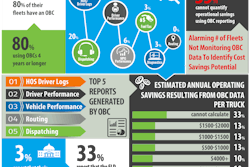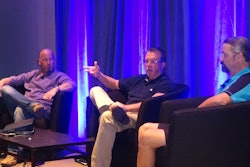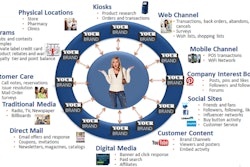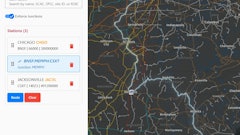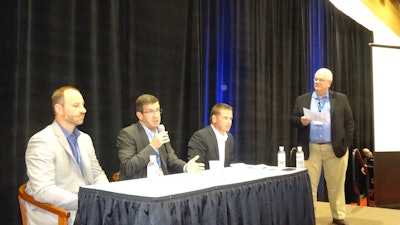
Onboard computers are bringing new opportunities to fleet management. Sessions on this topic were among the best attended at this week’s International Foodservice Distributors Association (IFDA) Distribution Solutions Conference in Phoenix, Ariz. at the Phoenix Convention Center.
Following a driver panel on the first day of the conference, the second day featured a panel of telematics technology providers on the future of onboard computers. The panel focused on the challenge of managing increasing amounts of data, the pending electronic logging device (ELD) mandate, how a company should prepare for equipping fleets with onboard computers, and other issues.
Lynn Conn, director of logistics at F.A.B. (Frosty Acres Brands) Inc., the Alpharetta, Ga.-based national foodservice marketing and purchasing cooperative for independent distributors, moderated the panel, which included: Rick Ochsendorf, executive vice president of Minnetonka, Minn.-based PeopleNet; Jon Van Winkle, vice president of product management at Minnetonka, Minn.-based Omnitracs LLC; and Rustin Keller, vice president and chief operating officer at Neenah, Wis.-based J.J. Keller & Associates, a source for safety and compliance solutions.
The panelists agreed that onboard computer systems are moving away from proprietary hardware. More of the software can be downloaded by mobile devices.
Because the onboard computers help drivers do their jobs better, one of the most important benefits to fleet operators is that it will help improve driver retention, panelists agreed.
One of the more difficult questions the panel addressed is what a fleet needs to do to get started with onboard computers. This was difficult to answer since companies have different needs. Ochsendorf said it is important for a company deploying onboard computers to have the right resources committed to the process.
The panelists agreed it is important for top management to support the process and to have the entire team on board.
“You need to understand your business,” Ochsendorf said. “You can’t try to bite off more than you can chew.”
Asked what happens to the electronic log if there is a power outage, the panelists agreed this is not going to create insurmountable problems. Ochsendorf said if the wireless network is being managed and monitored properly, this issue can be prevented.
Keller said companies should keep paper log books as backup. “You can turn to the paper version or turn to a secondary (backup) device,” he said.
As more sensors are developed for devices in and around a vehicle, such as sensors that monitor road conditions, the question arose about how difficult it will be for an onboard computer to connect with aftermarket sensors. The panelists noted that companies developing “outside the truck” capabilities want their software to integrate with onboard computers.
“Our vision of the future is about flexibility,” Van Winkle said.
Looking two to three years forward, he said trucks will have onboard computers built into them.
This raised the challenge of managing the growing amounts of data that the different devices will provide. “There is the potential for this (data) to explode over the next five to six years,” Van Winkle said. He said his company is committed to helping customers address this issue as it evolves.
Conn asked why the onboard computers aren’t built to connect to wi-fi “hot spots.” Keller and Van Winkle said this is doable, but accessing a wi-fi hot spot is not always a good option for a driver who needs ready access to performance data.
Ochsendorf said ELD compliance requires a driver to have access to engine performance data. The ELD, which takes effect is 2016, is a way to enforce the drivers’ hours of service (HOS) mandate, which limits a driver’s working hours to 70 hours in order to lessen the risk of fatigue-related accidents. Connecting to an external hot spot will not accomplish this. “We (the onboard computer) generate the hot spot,” he said.
Asked how much maintenance an onboard computer system requires, the panelists noted there is some support required, but one purpose of the system is to save time. “We wouldn’t be here if it added time,” Ochsendorf said.
Keller said the biggest headache fleets encounter after deploying electronic logs is accounting for unassigned driving time. This happens when a driver forgets to log onto the system when he begins his route. Other than this, he said there isn’t a lot of maintenance required for an electronic logging system.
One listener asked if there are ways to block texting and talking while driving. The panelists said the technology to do this is feasible and under development. “I believe that those solutions will emerge in the foreseeable future,” Van Winkle said.
Another listener asked if the different onboard computer systems are interoperable with one another.
Van Winkle said he believes the ELD mandate will drive interoperability among the different systems.
Ochsendorf said there have been instances where his customers needed to get data from another onboard computer system and he has been able to do it. “The market will push the need for that,” he said.





